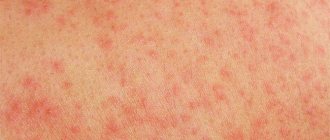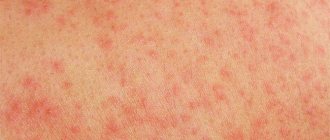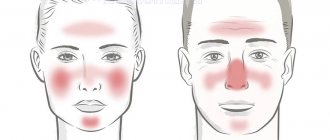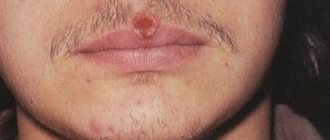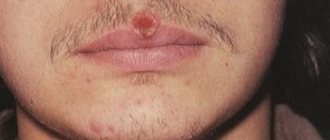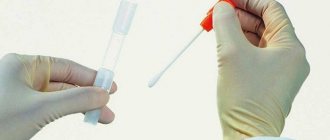What is urticarial rash?
Urticaria rash is a consequence of a complex inflammatory process that occurs in the thinnest vessels of the human body, capillaries located in the epidermal layer of the skin. This pathological process is commonly called urticarial vasculitis.
Also, this form of rash can be observed with urticaria.
What does the rash look like?
Upon visual examination, a patient with urticaria or urticarial vasculitis can see small nodules that slightly rise above the skin in the form of a papular rash (see photo). With a more severe course of the disease, the bubbles merge into a single whole and blisters appear. They have a reddish color, and are accompanied by a burning sensation and increased itching.
It should be noted that blisters with urticarial vasculitis last longer, and their treatment is sometimes difficult.
Children's diseases with rash. Vaccinations and immunity assessment
Most childhood infections are accompanied by various rashes. A rash is a general reaction of the body to the toxic effects of a pathogen and its waste products, and the child has an accelerated metabolism, wide blood vessels and good blood circulation.
Children's diseases are best dealt with in childhood. Firstly, this is how the child’s immunity is formed and protection against infections in the future. Secondly, in adulthood, childhood diseases are much more severe, and many of them are especially dangerous during pregnancy.
All infections are highly contagious, progress with fever and have symptoms of a cold. Often, characteristic signs of the rash allow them to be distinguished from each other. Let's look at the main childhood diseases and their distinctive features:
Measles
Recently it was believed that measles had been defeated, but recently outbreaks have been occurring more and more often. This is due to the refusal of mandatory preventive vaccinations. In fact, measles is a serious disease, especially in adolescence and adulthood. It occurs with complications: pneumonia, otitis, and frequent damage to the kidneys, liver and brain. May lead to deafness and blindness. The measles rash is maculopapular (papules - small elevations on the skin), appears on the 3rd day of illness, begins behind the ears and on the face and appears in stages from top to bottom, can have different sizes (polymorphic). Before the appearance of the rash, you can notice white dots on the mucous membrane of the oropharynx, reminiscent of semolina, with a red rim; they are called Filatov-Koplik spots.
Chicken pox
Caused by herpes virus type III. Most children become ill between the ages of 2 and 7 years; at older ages it is more severe. Everyone knows that the rash with chickenpox is in the form of blisters (vesicular). It starts from the scalp, spreading throughout the body. First, spots appear, which successively turn into papules and itchy blisters with transparent contents, leaving behind crusts. All these elements can be simultaneously observed on the child’s body. In adults, the infection can occur as shingles.
Rubella
It is highly contagious, often mild in both children and adults, and therefore may go undetected. It is particularly dangerous during pregnancy, as it can lead to the formation of fetal developmental abnormalities for up to 12 weeks. Typical manifestations: enlargement of the occipital and posterior cervical lymph nodes, a small spotted rash, without pain or itching.
Scarlet fever
Caused by group A beta-hemolytic streptococcus. It manifests itself as a sore throat and a typical pinpoint rash against the background of severe redness of the skin. Most of the rash elements are in the area of the flexor surfaces and they tend to merge. The nasolabial triangle always remains free of rash. Another sign is a bright red tongue.
Erythema infectiosum
Caused by parvovirus B19. In children, it is widespread, mild, with signs of a cold, and possible headache. The hallmark is bright redness of the cheeks, which is why parvovirus infection is better known as “slapped cheek disease.” Dangerous in the first trimester of pregnancy.
Roseola
Caused by herpes virus type VI. Mostly children under 5 years of age are affected. The disease is rarely recognized because in the first 3 days the temperature rises sharply to 39-40 degrees, on the 4th day it drops to normal numbers without signs of a cold, and a rash resembling rubella appears. Few people realize that these are manifestations of the same disease. In adults it causes chronic fatigue syndrome.
We have looked at the typical manifestations of the rash. But recently, the classic course of the disease has rarely occurred. In addition, rashes can occur with other infections: caused by the Epstein-Barr virus, cytomegalovirus, yersiniosis, viral hepatitis, and so on. The most correct position of a parent in the event of a rash in a child is to call a doctor at home or an ambulance to rule out severe, life-threatening infections, for example, meningococcal.
Why are vaccinations needed?
Vaccination against measles is mandatory and is included in the National Vaccination Calendar. There are vaccines against chickenpox and rubella; the latter is being discussed as mandatory for girls.
How do you know if you have immunity to childhood infections?
For this purpose, antibodies are determined - immunoglobulins class G (IgG). These are proteins of the immune system that appear in the body when a pathogen enters the body and persist for a very long time or for life. Their identification indicates good immunity and protection from re-infection.
But it should be remembered that IgG can be determined during the current disease. If there is a clinic, then IgM and IgA are simultaneously determined, as well as the identification of the pathogen by PCR.
The KDL laboratory offers to determine immunity to the following infections:
- Antibodies to measles virus, IgG
- Antibodies to the Varicella-Zoster virus, IgG – determination of immunity to chickenpox
- Antibodies to rubella virus, IgG
- Antibodies to parvovirus B19, IgG
- Antibodies to the herpes virus type VI (Human Herpes virus VI), IgG – to the causative agent of roseola
Who is indicated for determining immunity to childhood infections in the first place?
- Against measles - for everyone. If IgG is not detected, therefore, there is no protection and revaccination is recommended in order to avoid infection.
- When planning pregnancy - if there is no immunity, vaccination is indicated to provide protection against infections that can cause intrauterine damage to the fetus (rubella, parvovirus B19)
- Early in pregnancy (first 12 weeks). Infection during this period is most dangerous, since all the organs and tissues of the baby are formed). If IgG is detected, there is no risk of infection.
Get examined by the KDL laboratory in a timely manner and be healthy!
Classification
This type of skin rash is usually distinguished by its etiology. They can be observed when:
- Urticaria . A disease that is caused by exposure to and entry into the human body of an allergen. This may occur due to: Use of medications.
- Use of certain foods, vegetables and fruits.
- Contact with chemical compounds.
- Allergies to mosquito bites, etc. insects
- Genetic predisposition.
- Disorders of the psychoemotional state, psychogenic nature.
- With primary vasculitis, skin rashes occur in large numbers, but they can only affect the upper layer of the epidermis. Most often, the cause of this process is: the appearance of food allergies after wearing tight clothes that contain synthetic fibers.
Causes of rashes
The reasons are physiological, which are provided by a natural response to an internal process in the body. There may also be pathological causes that develop against the background of:
- disorders under the influence of parasites;
- chemical and toxic substances;
- metabolic disorders;
- lack of certain vitamins;
- dysbacteriosis;
- gastrointestinal and renal function disorders;
- external and internal factors.
As a result, we can conclude that rashes in childhood do not appear without a reason.
It seems to parents that all rashes are almost the same. However, there is a primary rash, which formed first, and a secondary one, which developed over time, instead of or near the primary one.
Causes
Basically, in the etiology of this disease, it is customary to distinguish the following reasons:
- the presence in the human body of an untreated source of chronic infection;
- frequent use of steroid hormones and their analogues;
- individual characteristics of the body that cause food allergies;
- severe diabetes mellitus with high blood sugar;
- severe forms of arterial hypertension;
- any type of hepatitis;
- mononucleosis.
Purulent rashes
Pustular purulent rashes are characteristic of bacterial infections. Most often, such diseases develop under the influence of Staphylococcus aureus. Sometimes the reason may lie in the influence of epidermal staphylococcus and streptococcus, as well as some other microbes, on the body.
A similar rash can appear due to microtraumas on the skin, scratches and wounds that allow microbes to penetrate inside. If the rashes are itchy and itchy at first, and the baby begins to scratch them, a bacterial infection occurs and pustules appear.
The formation of pustules in the area of the knees and elbows in childhood is possible with frequent trauma to the skin due to numerous falls. The formation of deep abscesses is called furunculosis.
Symptoms
This pathological process begins with the appearance of small pink nodules and blisters , which at first are sporadic. As the disease progresses, they merge and their number increases. Very often they are located:
- on the back of the forearm;
- on the hands;
- in the lower abdomen;
- on the knees and inner thighs.
Their contents may have a slightly reddish liquid as they are formed from small capillaries.
Pain syndrome may appear . Dyspeptic disorders in the form of nausea and vomiting, and diarrhea, which can last for several days, are also observed. These symptoms are accompanied by a feeling of thirst, which occurs due to dehydration.
In more severe cases, changes occur in the central nervous system, the following appears:
- severe temporal or occipital pain;
- blood pressure rises;
- Delusional states may occur.
It is very important to differentiate urticarial rash from the consequences of urticaria. With vasculitis, blisters have clear boundaries and are hard on palpation. In the case of urticaria, the skin always remains soft and elastic, despite multiple rashes.
Publications in the media
Urticaria is a disease manifested by a transient rash, the morphological element of which is a blister (urticaria), i.e. a clearly limited area of edema of the dermis. The color of the blister is red, the diameter is from several millimeters to several centimeters. Statistical data. Urticaria ranks third in the structure of allergic diseases after bronchial asthma and drug allergies. 15–25% of the population will experience urticaria or angioedema at least once during their lifetime.
Etiology • Allergens •• Food, incl. food additives •• Medicinal •• Venom of stinging insects •• Inhalation (pollen, etc.) and contact allergens • Substances that can activate mast cells without the participation of immunological mechanisms •• Acetylsalicylic acid and other NSAIDs •• Iodine-containing radiocontrast substances •• Plasma substitutes (p -ry dextran) •• Local anesthetics •• ACE inhibitors •• Codeine •• Tubocurarine •• Morphine •• Sodium thiopental • Transfusion reactions • Physical factors: heat, cold, insolation, pressure, etc. • Emotional stress • Diseases in which urticaria is one of the syndromes •• Infections - viral (infectious mononucleosis, hepatitis), helminthiases •• Collagenoses (SLE, rheumatoid arthritis) •• Serum sickness •• Cryoglobulinemia •• Mastocytosis •• Neoplastic processes • • Hyper- and hypothyroidism.
Pathogenesis • The appearance of skin elements is associated with the activation of mast cells and their release of mediators (histamine, Pg, leukotrienes), causing a local increase in vascular permeability • Mast cells are activated either through immunological mechanisms (IgE-mediated allergy, complement components - anaphylatoxins C3a and C5a), or directly with certain substances (so-called histamine liberators).
Pathomorphology. Edema and perivascular infiltration of the epidermis and upper dermis by lymphocytes, mast cells, eosinophils, neutrophils with compression of veins and lymphatic vessels.
Classification
• Depending on the stimulus that causes activation of mast cells, immunological and non-immunological forms of urticaria are distinguished •• Immunological urticaria ••• Anaphylactic type, based on an IgE-dependent mechanism caused by the production of reagin antibodies of the IgE class to specific allergens (drugs, food, helminths ) ••• Cytotoxic type - urticaria caused by cytotoxic antibodies occurs as a result of transfusion complications. IgG and IgM antibodies react with isoantigens on the donor's red blood cells, activating the complement system and cytolysis ••• Immunocomplex type. Urticaria appears as a result of the formation of immune complexes that settle on the vascular wall and activate the complement system. Anaphylatoxins and histamine are formed. Causes - administration of vaccines and serums (serum sickness, the clinical manifestation of which is, along with other symptoms, urticaria) •• Non-immunological urticaria ••• Anaphylactoid, associated with the use of histamine liberators (drugs, dextran, benzoates, foods - strawberries, shrimp) or consumption of foods containing histamine and other vasoactive amines (certain types of cheeses, tuna fish, smoked meats, sauerkraut, etc.) ••• Aspirin-dependent ••• Caused by exposure to physical factors (dermographic, temperature - cold, heat, cholinergic, solar, contact, vibration).
• Hereditary forms of urticaria: hereditary angioedema, impaired protoporphyrin metabolism, Schnitzler syndrome (urticaria, amyloidosis, deafness), hereditary cold urticaria, C3 inactivator deficiency.
• Other types of urticaria: idiopathic, pigmentary, infectious, paraneoblastic, endocrine, psychogenic.
• Based on the duration of the disease, acute urticaria (less than 6 weeks) and chronic urticaria (more than 6 weeks) are distinguished.
• In half of patients with chronic urticaria, delayed pressure urticaria is simultaneously observed.
Clinical forms. The nature of the clinical picture of skin lesions is determined by the peculiarity of the vascular network of the dermis (“shock organ”). The main morphological element is a blister, accompanied by itching and characterized by “volatility”, i.e. ability to disappear within a few hours or minutes.
• Acute urticaria •• Often caused by immune mechanisms (food, drug allergens, insect bites) or the action of histamine liberators •• Goes away after a few hours •• May occur in the form of a single episode: characterized by the sudden appearance of blisters and itching, which persist for up to 6 weeks. Individual elements of the rash last no more than 24 hours •• Damage to the respiratory tract and gastrointestinal tract in acute urticaria, in contrast to Quincke's edema, is rarely observed. •• A combination of acute urticaria and Quincke's edema is possible.
• Chronic urticaria •• Persists for >6 weeks •• Caused more often by non-immune mechanisms, incl. systemic diseases •• Often (about 70% of cases) the cause remains unclear.
• Cold urticaria - develops with exposure to cold •• Can be fatal with general cooling (cold urticaria with massive histamine release) •• A common cause is exposure to cold water, cold air. The reaction usually occurs within a few minutes after exposure to cold •• In severe cases, urticaria is accompanied by weakness, headache, dizziness, shortness of breath, and tachycardia. Abdominal pain and nausea may occur •• There is familial cold urticaria - a rare form of urticaria that is inherited in an autosomal dominant pattern •• Reflex cold urticaria - a generalized or local reaction to cold, similar to cholinergic urticaria. Sometimes it occurs only when the whole body cools down. A local reaction to cold is manifested by a rash that appears around the cooled area of the skin, while the skin that was in direct contact with the cold is not affected.
• Cholinergic (thermal) urticaria - small papules (5–10 mm) that occur after overheating, a bath, or a hot shower.
• Physical stress urticaria - provoked by physical activity; manifests itself in the form of cholinergic urticaria, vascular edema, wheezing, and arterial hypotension. Its development is often associated with the intake of allergenic foods.
• Dermographic (mechanical) urticaria - linear papules and redness of the skin as a result of mechanical irritation.
• Solar urticaria is a result of exposure to sunlight. There are several types, depending on the wavelength of light that induces the reactions. Most react to UV rays. Starts in a few minutes; goes away within 1–2 hours after insolation •• There are two types of solar urticaria ••• Type 1 - urticaria mediated by IgE to Ag present only in the blood serum of a patient with urticaria •• Type 2 - urticaria mediated by IgE to Ag present as both in the patient and in a healthy person •• With fixed solar urticaria, the rash appears in the same areas even with irradiation of the whole body.
• Pressure urticaria - occurs 4-6 hours after pressure on the skin (elastic stockings, shoes, etc.). There are two forms of pressure urticaria - immediate and delayed •• Immediate - blisters and erythema appear within a few minutes after pressure is applied to the skin (without rubbing or stretching). The rash is accompanied by a burning sensation and lasts 30 minutes, but no more than 2 hours •• Slow - dark, itchy and painful blisters appear on areas of the body subject to prolonged compression: after long periods of walking or sitting. The rash appears within 30 minutes to 9 hours after skin irritation and persists for about 36 hours. Malaise, chills, and headache are possible.
• Aquagenic urticaria is a rare form. Small papules appear after contact with water at any temperature. In some cases, only itching without urticarial rashes may appear (aquagenic itch). The reaction is associated with mast cell degranulation.
• Contact urticaria - occurs when the skin or mucous membrane comes into contact with certain substances. Characterized by blisters, itching, burning. The most common cause is latex. In severe cases, a complication in the form of anaphylactic shock is possible.
• Idiopathic urticaria - the cause is unclear.
Diagnostics • For reactions to food or drugs - provocative tests with suspected allergens after an elimination diet • Inhalation allergens - skin tests, radioallergosorbent test (RAST) • Idiopathic, lasting more than 6 weeks - exclusion of systemic diseases (skin biopsy, ESR determination, urinalysis , ANAT, etc.) • Provocative tests •• Cold urticaria - cold test: a piece of ice is placed on the skin for 5 minutes; observe the reaction for 10–15 minutes •• Cholinergic or exercise-induced urticaria: exercise test, skin test with methacholine (local reaction to intradermal injection of 0.1 mg in 0.9% sodium chloride solution) •• Solar - insolation of a certain wavelength is carried out •• Delayed as a result of compression: a bag of sand of 2-4 kg is applied for 3 hours •• Aquagenic - tap water of various temperatures is used •• Infectious - bacteriological examination of a smear from the pharynx, titer of antistreptolysins, CRP, analysis stool (for parasites), liver function tests, mononucleosis test •• Autoimmune - ANAT, complement, cryoglobulins, serum protein electrophoresis.
Differential diagnosis • Erythema multiforme • Mastocytosis • Bullous pemphigoid (urticaria stage) • Herpes • Dermatitis herpetiformis.
Treatment • Drugs of choice - antihistamines •• For acute urticaria, first generation drugs are preferable (the effect of second generation drugs mainly manifests itself at a later stage) ••• For adults and children over 6 years old - diphenhydramine 25-50 mg every 6 hours •• • Children under 6 years old - diphenhydramine 5 mg/kg/day •• For chronic urticaria ••• Loratadine 10 mg 1 time / day ••• Cetirizine 0.01 g 1 time / day (evening) or 0.005 g 2 times /day (morning and evening) ••• Cyproheptadine 4–8 mg every 4–8 hours (children - 0.25–0.5 mg/kg/day every 6–8 hours) ••• Fexofenadine-180, once per day ••• Ebastine for adults 10–20 mg 1 time / day, for children in the form of syrup • Alternative drugs •• For chronic urticaria - histamine H2 receptor blockers (cimetidine, ranitidine) in addition to H1 receptor blockers • In severe, resistant in cases of therapy - GC (for example, prednisolone up to 40 mg daily, followed by a gradual dose reduction).
A complication is a severe systemic allergic reaction (bronchospasm, anaphylaxis).
Course and prognosis. Improvement in less than 72 hours in 70% of patients (chronic form - improvement in 30% of patients).
ICD-10 • L50 Urticaria
Notes. The mechanisms of urticaria and Quincke's edema are the same - a localized anaphylactic reaction causes vasodilation, increased vascular permeability of the dermis (urticaria) or subcutaneous tissues (Quincke's edema).
Diagnostics
After examining and interviewing the patient, the doctor, based on the clinical picture, necessarily prescribes a histological examination of fragments of the affected skin taken for analysis. This is done to exclude the development of oncological pathologies, such as skin cancer (this disease begins with similar symptoms).
In parallel, the following is assigned:
- general blood test, where the main indicator is the level of red blood cells and ESR;
- general urine analysis;
- blood for bacterial, fungal and viral infections;
- Sometimes an ultrasound of the affected areas is prescribed.
It is very important to establish the correct diagnosis, since the removal of the urticarial rash will depend on this. Because it is a consequence of the disease, and to eliminate it it is necessary to cure urticarial vasculitis.
Treatment of urticaria rash
To cure this disease, therapy must be comprehensive. The patient is prescribed:
- Antihistamines to relieve swelling and hyperemia.
- Non-steroidal anti-inflammatory drugs (if their use does not produce positive dynamics, corticosteroid hormones are prescribed).
- Plasmapheresis may be used.
In very severe cases, therapy using immunosuppressive drugs . This helps to weaken the immune system, as it negatively affects the body’s own tissues. The big disadvantage of this treatment is a decrease in immunity, as a result of which the patient can easily become infected.
What parents need to do
To assess the situation, parents need to examine the child’s skin by undressing him. It is necessary to determine the nature of the rash (vesicle, pustule, papule, etc.), and its area. It is necessary to remember and analyze the situation preceding the appearance of a rash on the body.
The next step is to measure the temperature, examine the throat and tonsils, and identify other signs if any. You need to decide whether to call a doctor at home or visit a medical facility yourself.
What not to do if a rash appears
Prohibited actions:
- squeezing out pustules;
- scratching the rash;
- self-treatment;
- opening of bubbles;
- applying brightly colored products to the skin, as this complicates diagnostic measures.
Do not forget that some infectious diseases accompanied by the appearance of skin rashes are contagious. As a result, you should not go to the clinic with your child, since you can infect someone while waiting your turn. In such a situation, it is recommended to call a doctor home.



